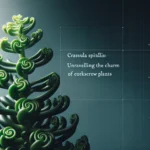Introduction to Crassula Species
Imagine a world where versatility and resilience meet in perfect harmony—welcome to the Crassula genus, a global fascination that draws plant aficionados from all walks of life. These little green jewels adorn windowsills and rock gardens alike, each leaf a testament to nature’s prowess in creating diverse and robust life forms. So, let’s dive into the captivating realm of Crassula species, where Mother Nature’s green thumb is on a spectacular display.

From the sculptural jade plants to the intricate charm of the Crassula capitella, there is a Crassula out there that will capture your heart. These hardy succulents are not just about good looks; they’re also low maintenance, asking for little yet giving so much in return. Whether you are an experienced succulent grower or a curious newbie, Crassulas provide a splendid canvas to express your care and creativity.
Not only do they bring joy to those who grow them, but the unassuming Crassula also harbors secrets that could fascinate scientists and environmentalists. Their ability to flourish in varied and often challenging conditions speaks volumes about their adaptability and resilience—a true inspiration for us all.
Eager to further explore these succulent treasures? Dive into their expansive world and discover the unique features that make Crassula a beloved genus among plant lovers around the globe. With each specimen telling its own story, your journey into the world of Crassulas is bound to be one filled with amazement and wonder.
Diving into Diversity: Types of Crassula
Welcome to the vibrant world of Crassula, where succulent enthusiasts find their haven. With a lineage that boasts an incredible array of species, it’s like walking into a carnival of shapes, sizes, and hues. So strap in, and let’s unearth the treasures within this succulent family.
Imagine stepping into a botanical boutique, each Crassula a unique piece of living art. Leading the pack in popularity is the Crassula ovata, commonly known as the Jade plant. This green gem symbolizes good luck and prosperity, making it a favorite housewarming gift. Picture its fleshy, coin-shaped leaves perched on windowsills, soaking up the sun and showering homes with a splash of nature’s elegance.
Next in line, the Crassula arborescens steals the spotlight. Also referred to as the Silver Dollar plant, it features round, silvery leaves with a hint of blue, reminiscent of a full moon on a clear night sky. It’s a stunning centerpiece for any succulent collection, evoking an almost lunar magnificence.
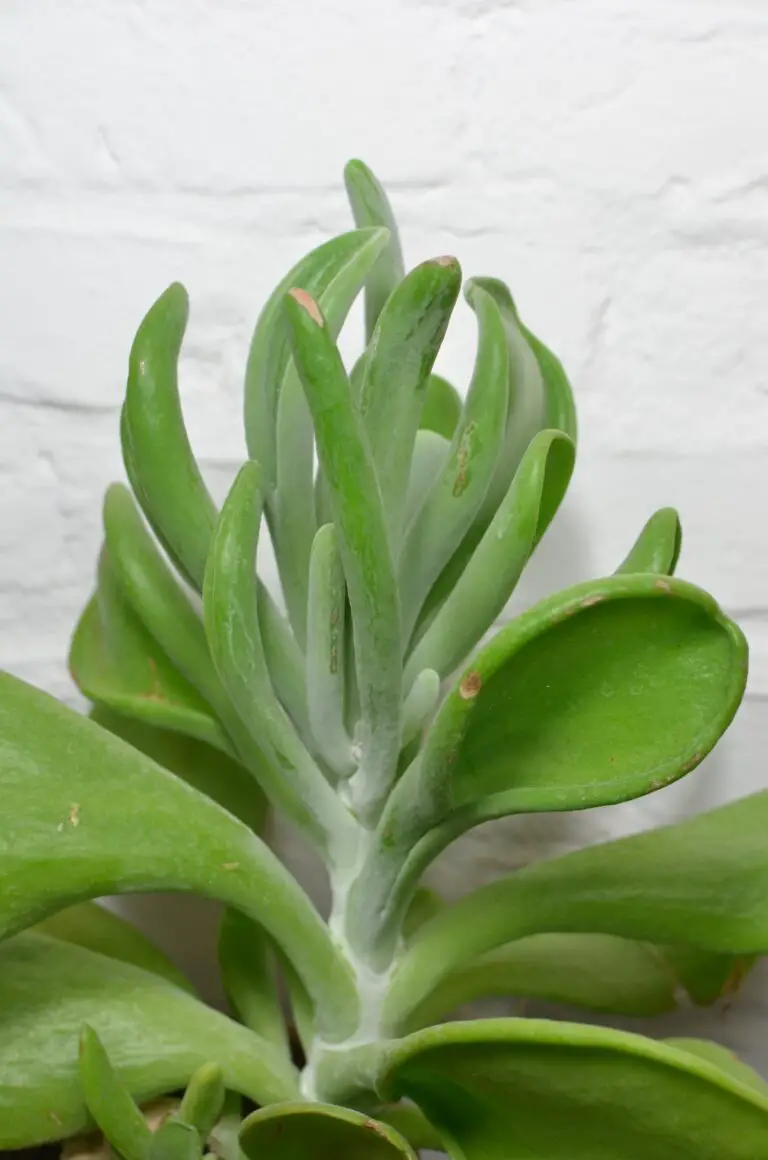
Casting our gaze further, the Crassula capitella is the star that brings a flare to the flora show. Its leaves spiral like a staircase to heaven, with tips blushing red as if kissed by Aphrodite herself. It’s a visual feast, promising to capture the heart of anyone lucky enough to witness its fiery bloom.
Delving deeper into the Crassula realm, we discover a kaleidoscope of forms. From the ripple-leafed Crassula undulatifolia to the whimsically stacked Crassula perforata, the diversity is dazzling. To immerse yourself further into the world of these delightful succulents, I recommend visiting this detailed guide on Crassulaceae that unveils even more hidden gems waiting for your green thumb.
There’s a Crassula out there for every plant lover, and the joy is in the discovery. Whether you’re a seasoned gardener or a budding enthusiast, these succulent wonders are eagerly waiting to spruce up your spaces with a touch of greenery that’s anything but ordinary.
Cultivating Crassulas: Essential Care Tips
Join me on this green-thumb adventure, where we dive into the world of crassulas, those plump-leaved succulents that steal our hearts. Not only are they charming, but their resilience makes them ideal for both seasoned plant enthusiasts and rookies. Let’s unfold the tapestry of tips to keep your crassulas not just surviving, but thriving!
Soaking Up the Sun: Light for Life
Imagine your crassulas are sunbathers lounging on the beach; they yearn for that glorious sunshine. These plants are solar-powered beauties, desiring a bright spot in your home or garden to bask in. A windowsill with gentle morning sun and dappled afternoon rays is a crassula’s paradise. Rotate them occasionally to ensure each side gets its time in the limelight, preventing lopsided growth and promoting even, lush foliage.
Quenching Thirst: Watering Wonders
When it comes to hydration, think of crassulas as camels of the plant world. They store water in their leaves, allowing them to endure drier periods. But beware of overwatering, as it is the Achilles’ heel of many a succulent. The rule of thumb? Allow the soil to dry out completely before giving them a drink. And when you do, water deeply but infrequently, mimicking their natural arid habitat. This will foster robust roots and prevent dreaded rot.
The Ground Beneath: Soil and Support
The ideal soil for crassulas is like the perfect cheesecake crust—light and crumbly, yet supportive. Go for a well-draining mix, abundant with perlite or sand. The goal is to provide a soil structure that says goodbye to water quickly, leaving enough air pockets for roots to breathe easy and spread their wings, figuratively speaking. Ensuring the right foundation will have your crassulas standing tall and proud.
Keeping Cool: Temperature and Moods
Like Goldilocks’ preference for everything ‘just right,’ crassulas thrive in moderate temperatures. They savor the warmth of spring and summer, growing vigorously, but prefer not to bake in scorching heat. Conversely, in winter, they like to cool their heels a bit but are no friends of frost. Aim for a range between 60-75°F (15-24°C) through the seasons, mimicking the mild conditions of their native lands.
Crassulas frown upon high humidity, so give them an environment that feels more desert than rainforest. A room with air movement or a gentle fan can offer them the arid embrace they prefer, keeping leaf clusters dry and happy.
Here’s a visual treat that encapsulates the essence of crassula care. Dive into this video that showcases the joy of nurturing these versatile plants.
With these tips, your crassulas will not only grow, but they will exude that serene beauty unique to well-tended succulents. So go ahead, treat your crassulas with a little TLC, and watch as they transform your space with their evergreen charm and resilience.
Propagation Perfection: Propagating Your Crassula
Ready to multiply your succulent collection without even stepping into a nursery? Say hello to propagating Crassulas! It’s the best-kept secret gardeners swear by, turning one plant into many with a few simple techniques. But, how does one turn a single leaf into a flourishing Crassula plant? Here’s your step-by-step guide to unlocking the propagation mysteries of these resilient plants.
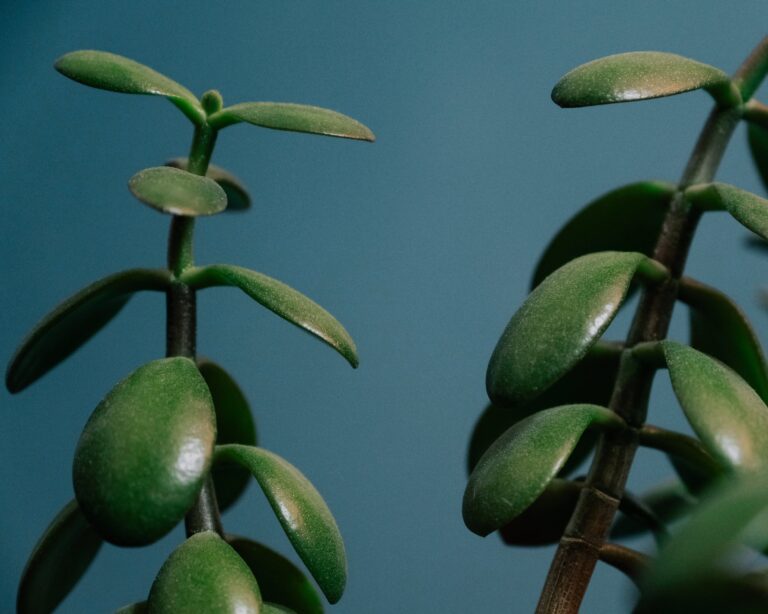
Leaf Cuttings: The Simple Start
Truth be told, propagating Crassula ovata begins with a single leaf. The process is straightforward – gently twist a healthy leaf from the mother plant. It’s crucial that the leaf comes away clean, with no part left on the stem, as this could impair its ability to sprout new roots. Lay the leaf flat on a dry surface and give it a few days to callous over. Once the wound has dried, place it atop well-draining soil, sit back, and watch nature do its thing. Within weeks, tiny roots and a new rosette will reveal themselves as the start of a new plant. Patience is key – it may take several months before your leaf-cutting is ready to be potted on its own.
Stem Cuttings: The Quickening
If you’re after a faster route to Crassula proliferation, stem cuttings are your ally. Snip a couple of inches from the tip of a healthy stem – make sure it has a few leaves. Like leaf cuttings, let the cut end callous, then nestle it into succulent soil. These cuttings are particularly rewarding; it doesn’t take long before you’ll notice new growth from both the base of the cutting and the original plant, doubling your Crassula joy!
Sowing Seeds: The Patience Play
For the purists who relish the wait, starting Crassulas from seed is akin to the slow food movement of horticulture. Scatter seeds over a well-draining mix, and keep conditions humid – a clear cover can help with this. Seedlings take time to make themselves known, so perseverance and a gentle touch with watering is the game’s name. As they grow, you’ll marvel at each microscopic milestone, from the emergence of the first true leaves to the day you transplant them into their individual pots. This is a propagation method that teaches the virtue of patience and rewards you with a diverse array of specimens in your collection. Sure, it’s a long journey, but the reward of raising Crassulas from seed to succulent stardom is immeasurable.
Whether you choose leaf cuttings, stem cuttings, or seeds, each method offers a unique journey into the world of Crassula propagation. The beauty of it all? You’re not just growing plants; you’re engaging in a living art form. So, wear your green thumb with pride and dive into the propagation perfection. Your Crassula clan awaits!
Crassula’s Common Companions: Companion Planting Insights
The art of companion planting is much like setting up a dinner party where each guest complements the other, creating a harmonious atmosphere. In the succulent world, Crassula species are like the esteemed guests of honor, bringing their unique beauty and resilience to the table. But who are their best companions in the plant realm?
Visualize a vibrant succulent garden, with Crassula plants nestled among their peers. A perfect match for these succulent beauties is the soft, mounding appearance of Sedum species. Picture the ‘Autumn Joy’ variety with its pink star-shaped flowers providing a height contrast to the low-growing Crassula spread beneath it. This pairing not only pleases the eye but the differing heights optimize space and light distribution, ensuring each plant receives its share of sunshine and nutrients.
Another exemplary partner is the hardy Aloe species. Take the Aloe vera, for instance; its upright, fleshy leaves create a striking vertical dimension against the dense foliage of Crassula ovata. Such an arrangement not only enriches the visual aspect of your succulent display but also establishes a microclimate where both plants thrive in the shared shade and protection. The evergreen companionship of Crassula and Aloe not only captivates the onlooker but creates a dynamic ecosystem that supports their mutual growth.
For a pop of color, intersperse your Crassula assembly with the blossoming vibrancy of Echeveria species. Their rosette form showcases a palette of hues, from pastel pinks to intense blues, which beautifully complements the green, sturdy leaves of Crassula. Each Echeveria bloom stands as a natural masterpiece that enhances the aesthetic appeal of your succulent arrangement.
It’s not only about looks, though. Companion plants like the whimsical Senecio with their string-like foliage provide textural contrast and share mutual benefits, such as pest control. By incorporating such diverse yet compatible plants, you curate a living mosaic that mirrors nature’s own intricate patterns.
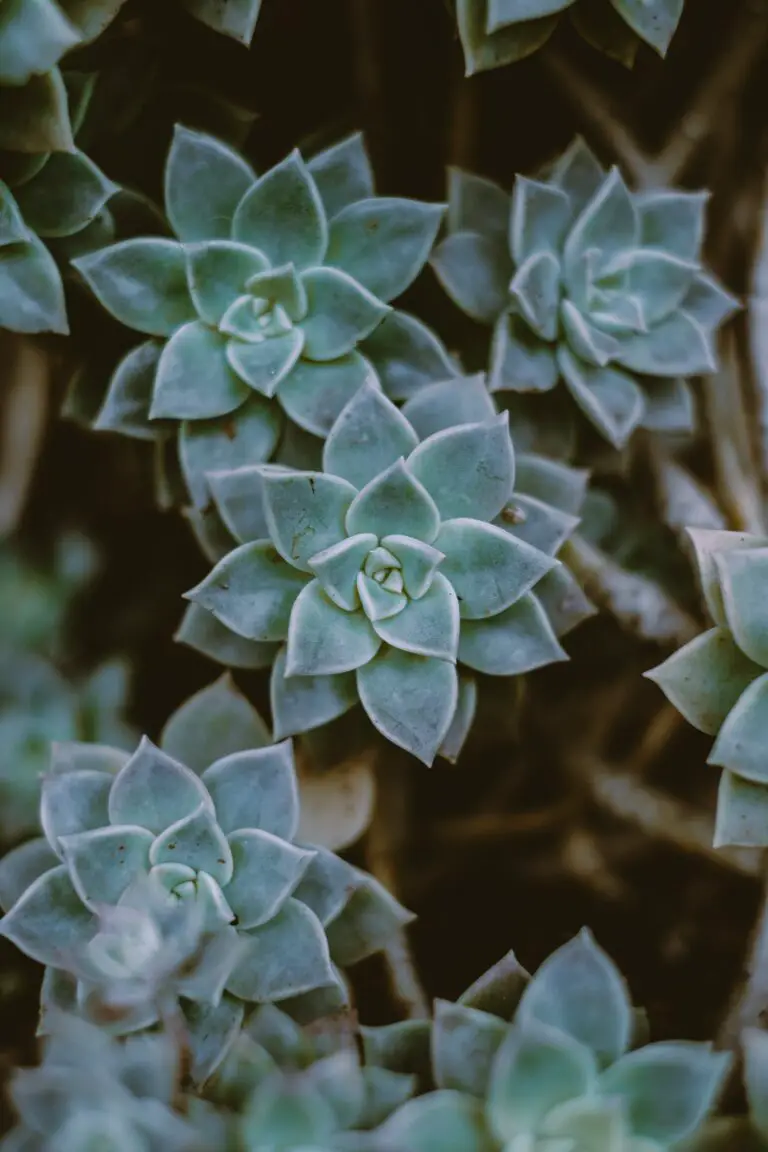
The ultimate goal of companion planting is to cultivate a setting where each species not only survives but thrives. The charming camaraderie between Crassula species and their companions is a testament to the symbiotic relationships that can be fostered within our gardens. By understanding the physical, aesthetic, and environmental needs of these plants, you can create a succulent sanctuary that is both beautiful and beneficial, living in a delicate balance forged by nature’s own hand.
Troubleshooting Tips: Addressing Crassula Concerns
Ever found yourself staring at your beloved Crassula, baffled by its unwelcoming yellow leaves or waning vigor? You’re not alone! In the flourishing world of succulents, Crassula species often bring joy with their unique beauty but can sometimes throw curveballs. Let’s dive into the nitty-gritty of Crassula care and figure out how to keep these succulent wonders thriving.

Imagine you’ve provided the perfect sun-kissed spot, and watered with precision, yet something seems off. Leaves dropping like flies or a mysterious pest lurking under the foliage—it’s enough to make any plant parent anxious. Fear not, for we can crack these conundrums!
Common Culprits: Pests and Diseases
First, let’s face the invaders. Mealybugs, those cotton-like freeloaders, love making a home out of your Crassula’s nooks. If you spot tiny white clusters, it’s time for action. A simple alcohol-soaked cotton swab can be your first line of defense. Swipe precisely, evicting these pests with a touch of patience and diligence. Another notorious pest is the spider mite brigade, which requires a keen eye to spot and an even steadier hand to vanquish using a soft spray of water or miticide.
Environmental Stressors: Sunburns and Frostbite
Did you know your Crassula can get a sunburn? Just like us, an overexposure to the sun can lead to scorched leaves. Acclimating them to bright light gradually is key. But let’s not forget winter’s chill—the bane of many a tropical green. A sudden frost can send shivers through your Crassula’s system, leading to frostbite. The remedy here is to lend your green friend some warmth, simply by moving it to a more temperature-controlled environment.
When Thirst Turns to Drowning: Overwatering Woes
Much like Goldilocks’ preferred porridge, the water for your Crassula should be just right. A deluge can lead to root rot—a silent assassin in the succulent world. Avoiding sopping soil will save your succulent. If you’ve been heavy-handed with the H2O, let the soil dry out and consider enhancing drainage with gritty substrate amendments. Remember, a Crassula craves infrequent but thorough watering, mimicking the drought and downpour cycle of its native habitat.
In each instance of Crassula calamity, a careful analysis and targeted action can restore balance. Whether it’s a skirmish with pests, a brush with extreme weather, or a waterlogged pot, understanding the signals your plant sends is critical. With these insights, your Crassula doesn’t have to be just another green casualty; it can flourish and continue to bring serene beauty to your space.
Showcasing Crassula: Display Ideas and Inspirations
Embrace the lush allure of Crassula species, the green goddesses of succulent charm, as we circle through a whirlwind of inspiring showcase options designed to elevate your living space with nothing short of a botanical masterpiece. Let’s roll up our sleeves and plant some creative seeds!
Imagine your coffee table transformed into a miniature desert oasis.  There, amidst the gloss of magazines and the remote’s jingle, sits a terracotta bowl overflowing with a selection of Crassula species. With each drop of sunlight that dances through the window, their plump leaves shimmer, creating a living mosaic that prompts the daydreamer in us all.
There, amidst the gloss of magazines and the remote’s jingle, sits a terracotta bowl overflowing with a selection of Crassula species. With each drop of sunlight that dances through the window, their plump leaves shimmer, creating a living mosaic that prompts the daydreamer in us all.
Containers That Capture the Essence
Why settle for the mundane when you can cradle your Crassula in containers that are as extraordinary as the plants themselves? Think outside the traditional pot and into the realm of vintage teacups, eclectic glass terrariums, or even carved-out books for a touch of whimsical literary flair. Each Crassula, perched in its unique abode, becomes a piece of living art that conversations naturally bloom around.
Artistic Arrangements that Tell a Story
Grouping Crassula plants isn’t just about clustering them together; it’s about narrating a story. Combine various Crassula shapes and sizes to create depth, or mix them with other succulents to illustrate a diverse tapestry of textures. Like actors on a stage, let each plant’s form contribute to the visual drama unfolding on your shelf or mantelpiece.
The Perfect Placement for Visual Delight
When it comes to placing your Crassula, lighting is your guiding star. Bright, indirect light will coax out their vivid colors and maintain their compact form. Elevate smaller Crassulas on stacks of books or nestled in wall niches, giving them the solo spotlight they deserve. Larger specimens can anchor corners or shine atop pedestal stands, transforming overlooked spaces into focal points of natural beauty.
Finesse your Crassula display with pebbles or mosses, and remember, the right container and location can turn even the humblest Crassula into an emblem of elegance. Through creative displays, your home becomes a canvas, and Crassulas, the vibrant brushstrokes that bring it to life.
Sustainability and Crassula: Embracing Eco-Friendly Practices
When it comes to leading an eco-conscious lifestyle, the Crassula genus — a mesmerizing mosaic of succulents — stands out with its exemplary drought-tolerance and minimalistic water requirements. Delve into the world of sustainable Crassula cultivation, and discover how integrating these resilient plants into our lives can bolster environmental stewardship.
Imagine a world where your garden thrives, yet your environmental footprint is as diminutive as the delicate Crassula petals. These succulents, hailing from various regions, inherently support water conservation efforts due to their unique ability to prosper in arid conditions. By choosing Crassula species for your green haven, you’re not only opting for aesthetic beauty but also taking a proactive step towards water sustainability.
Real-life examples abound: urban dwellers cultivating vertical Crassula gardens on sunny balconies, introducing a vibrant touch to grey cityscapes while saving precious space and resources. Or consider the suburban homeowner who replaces a thirsty lawn with an array of Crassula varieties, transforming their outdoor space into a water-wise sanctuary.
Yet, beyond individual choices, commercial growers are now also pivoting towards sustainable practices. They’re embracing soil amendments that enhance water retention, reducing the reliance on frequent irrigation. This shift not only benefits the environment but also results in healthier, more robust Crassula specimens that can better withstand pests and diseases.
Integrating Crassula Into Eco-Friendly Living
The allure of Crassula lies not only in their succulence but also in their versatility. From Crassula ovata, the classic Jade Plant, to the striking Crassula capitella ‘Campfire’, these species can adapt to various eco-friendly gardening techniques. Companion planting with other drought-resistant flora creates symbiotic relationships, conserving water and promoting biodiversity.
Furthermore, in eco-friendly architectural designs, Crassula species are increasingly featured in green roofs and living walls, contributing to building insulation and urban heat island mitigation. These applications highlight how Crassula cultivation, when approached with sustainability in mind, can weave into the fabric of green living, reinforcing a commitment to our planet’s well-being.
Embracing Crassula in our surroundings is a statement of intent; it reflects a choice to cultivate not just plants but a sustainable future. Let’s continue to explore the wonder of Crassula species through the lens of conservation and eco-friendly innovation.
Crassula Species: Unraveling the Succulent Wonders
Frequently Asked Questions
Got a burning question about those juicy, plump leaves of Crassula species that seem to sprout from rocky crevices with the ease of a master yogi finding zen? Fear not! We’ve rallied the most curious minds and green thumbs to create a treasure trove of answers that would unravel the succulent mysteries of these hardy wonders.
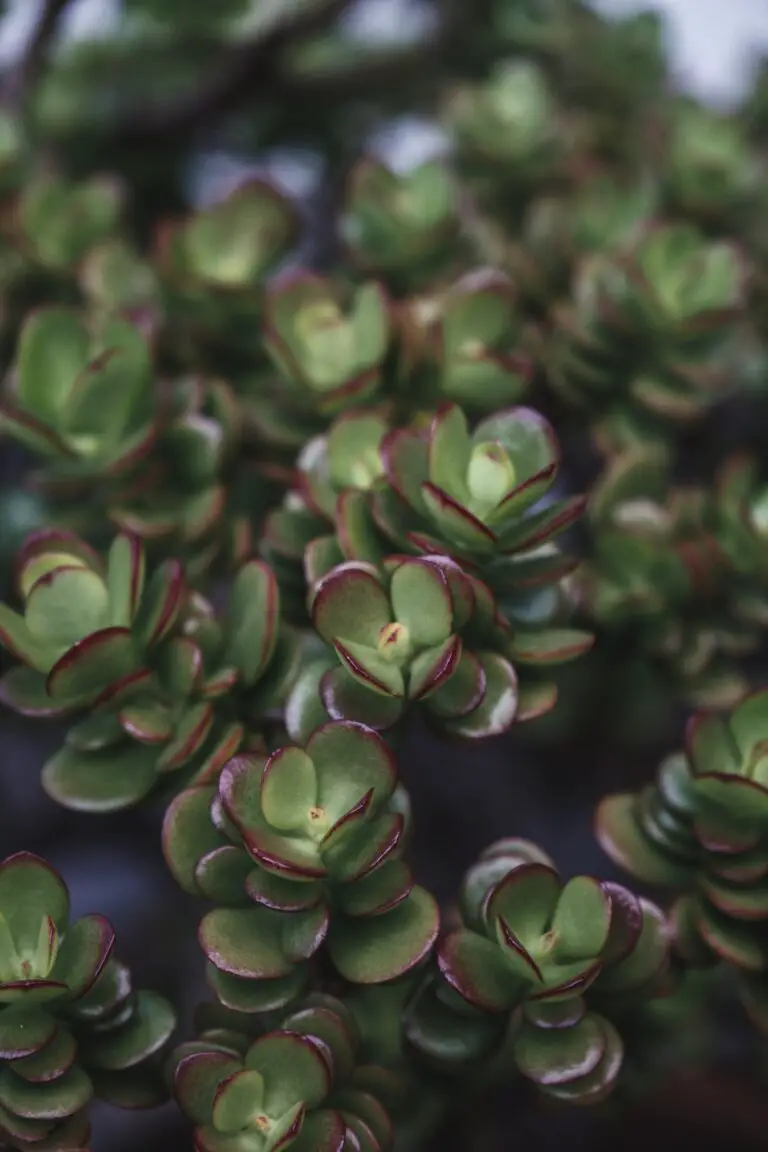
Imagine you’re at a friend’s garden party, and a peculiar succulent catches your eye. It’s sturdy yet elegant, flourishing in a snug corner. “That’s a Crassula,” your friend proclaims. But what species is it? What does it need to thrive? Suddenly, you’re brimming with questions! That’s how most enthusiasts begin their journey into the remarkable world of Crassula species—through awe, intrigue, and a thirst for knowledge.
You might wonder, “Can I grow a Crassula indoors?” Absolutely! These are the rock stars of the indoor plant world, basking in the sun’s symphony through your window. Or perhaps you ask, “Are all Crassula species small?” Not at all! While many are compact, others stand tall and command a presence, transforming spaces into a horticultural haven.
Let’s not forget water – or the lack thereof. It’s like Crassula have taken a masterclass in water conservation. Drought? They shrug it off with their water-storing prowess. Overzealous watering can, however, be their kryptonite—so a ‘less is more’ watering mantra will become your chant.
Questions about Crassula species mirror the curious, explorative spirit of gardeners and plant lovers alike. So ask away, tend to your succulent buddies with knowledge, and watch as your Crassula collections turn your home into an oasis of vitality and charm. Each species, each question, is a step toward greener pastures—or should we say, succulent sanctuaries!



